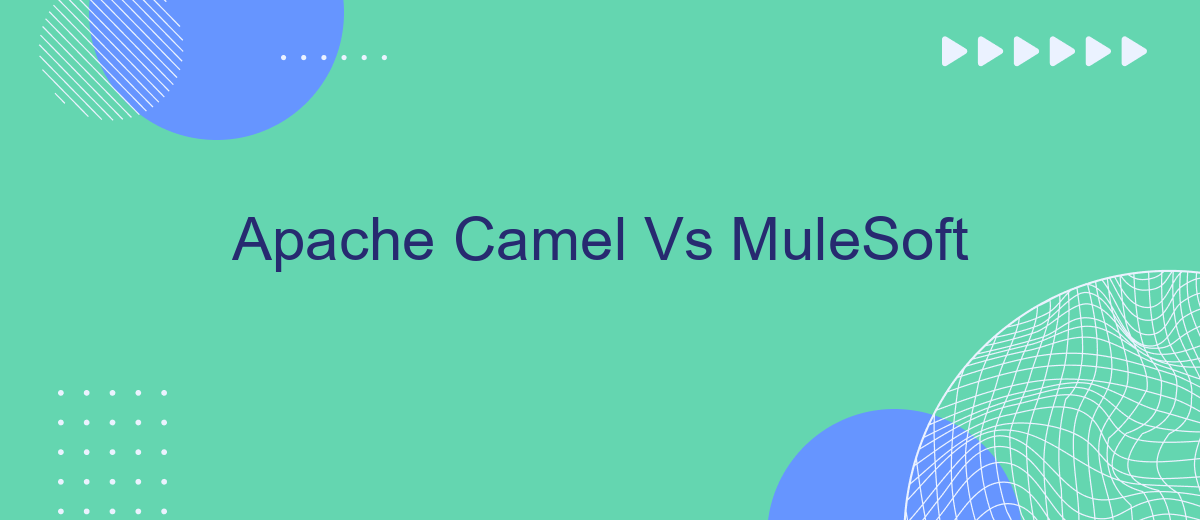When it comes to enterprise integration and streamlining complex workflows, Apache Camel and MuleSoft are two prominent solutions that often come into consideration. Both platforms offer robust tools for connecting diverse systems, yet they differ significantly in their approaches, features, and use cases. This article delves into a comparative analysis of Apache Camel and MuleSoft, helping you make an informed decision for your integration needs.
Introduction
In the ever-evolving landscape of enterprise integration, choosing the right tool can significantly impact your business operations. Apache Camel and MuleSoft are two of the most prominent integration platforms, each offering unique features and capabilities. This article aims to compare these two solutions to help you make an informed decision.
- Apache Camel: An open-source integration framework that uses enterprise integration patterns to facilitate communication between different systems.
- MuleSoft: A comprehensive integration platform that provides tools for designing, building, and managing APIs and integrations.
Understanding the strengths and limitations of both Apache Camel and MuleSoft is crucial for optimizing your integration strategy. Additionally, services like SaveMyLeads can further streamline your integration processes by automating data transfers between various applications, thereby enhancing operational efficiency. By the end of this comparison, you'll have a clearer picture of which platform aligns best with your business needs.
Capabilities Comparison

Apache Camel and MuleSoft are both powerful integration platforms, each with its unique strengths. Apache Camel is an open-source integration framework that uses Enterprise Integration Patterns (EIPs) to define routing and mediation rules. It excels in flexibility and scalability, making it a preferred choice for developers who need to customize their integration solutions. MuleSoft, on the other hand, is a comprehensive integration platform that offers a wide range of pre-built connectors and templates. Its Anypoint Platform provides an easy-to-use interface for designing, deploying, and managing APIs, making it ideal for organizations looking for a more out-of-the-box solution.
One notable difference is in their approach to integration. Apache Camel requires a deeper understanding of coding and EIPs, which can be a barrier for non-developers. MuleSoft's user-friendly interface and extensive documentation lower this barrier, allowing business users to participate in the integration process. Additionally, services like SaveMyLeads can complement these platforms by automating lead generation and data synchronization tasks, further enhancing integration capabilities. In summary, while Apache Camel offers unparalleled flexibility for complex integrations, MuleSoft provides a more accessible and comprehensive solution for a broader range of users.
Technical Architecture

When comparing the technical architecture of Apache Camel and MuleSoft, it's essential to understand their core components and how they facilitate integration. Apache Camel is a lightweight integration framework based on enterprise integration patterns (EIPs). It provides a wide range of components for routing and transforming data, making it highly flexible and adaptable to various integration scenarios.
- Apache Camel: Utilizes a Java-based routing engine that allows developers to define integration flows using a domain-specific language (DSL). It supports a variety of protocols and data formats, making it versatile for different integration needs.
- MuleSoft: Offers a more comprehensive platform with Mule runtime engine, Anypoint Studio, and Anypoint Exchange. It provides a visual interface for designing integrations and a rich set of pre-built connectors for various systems and services, including SaveMyLeads for automating lead data transfers.
In summary, Apache Camel is ideal for developers seeking a flexible, code-centric approach to integration, while MuleSoft provides a robust, enterprise-grade platform with extensive tooling and pre-built connectors for rapid integration development. Both have their strengths, depending on the specific needs and resources of the organization.
Pricing and Licensing

When comparing Apache Camel and MuleSoft, pricing and licensing are crucial factors to consider. Apache Camel is an open-source integration framework, which means it is free to use. However, it requires significant technical expertise to set up and maintain, which could lead to higher indirect costs.
On the other hand, MuleSoft offers a more comprehensive, enterprise-grade integration platform with various pricing tiers based on the number of users, connections, and features. MuleSoft provides a subscription-based model, which includes support and regular updates, making it a more predictable expense for businesses.
- Apache Camel: Free, open-source
- MuleSoft: Subscription-based, enterprise-level pricing
- SaveMyLeads: Affordable automation for lead management
For companies looking for a balance between cost and ease of use, services like SaveMyLeads can be a valuable addition. SaveMyLeads offers a cost-effective way to automate lead management and integrate various services without the need for extensive technical knowledge. This can complement your integration strategy, especially if you choose the more complex Apache Camel framework.
Conclusion
In conclusion, both Apache Camel and MuleSoft offer robust solutions for integration needs, each with its unique strengths. Apache Camel excels in flexibility and is well-suited for developers who prefer a code-centric approach. It provides a wide range of components and is highly adaptable to various integration scenarios. Conversely, MuleSoft stands out with its user-friendly interface and comprehensive suite of tools that cater to both technical and non-technical users. Its strong focus on API management and pre-built connectors make it an excellent choice for enterprises looking for a more out-of-the-box solution.
When deciding between the two, it's essential to consider your specific requirements, team expertise, and long-term integration goals. For those who need a simple yet powerful way to automate integrations without extensive coding, services like SaveMyLeads can offer an invaluable alternative. SaveMyLeads simplifies the process of connecting various applications and automating workflows, making it an ideal choice for businesses looking to streamline their operations quickly and efficiently. Ultimately, the right choice depends on your organization's unique needs and the complexity of your integration projects.
- Automate the work with leads from the Facebook advertising account
- Empower with integrations and instant transfer of leads
- Don't spend money on developers or integrators
- Save time by automating routine tasks
FAQ
What are the primary differences between Apache Camel and MuleSoft?
Which one is easier to use for beginners?
How do these platforms handle scalability?
Can I use these platforms for cloud-based integrations?
Are there any services to help with automating and setting up integrations?
Don't waste another minute manually transferring leads from Facebook to other systems. SaveMyLeads is a simple and effective tool that will allow you to automate this process so that you don't have to spend time on the routine. Try SaveMyLeads features, make sure that this tool will relieve your employees and after 5 minutes of settings your business will start working faster.

